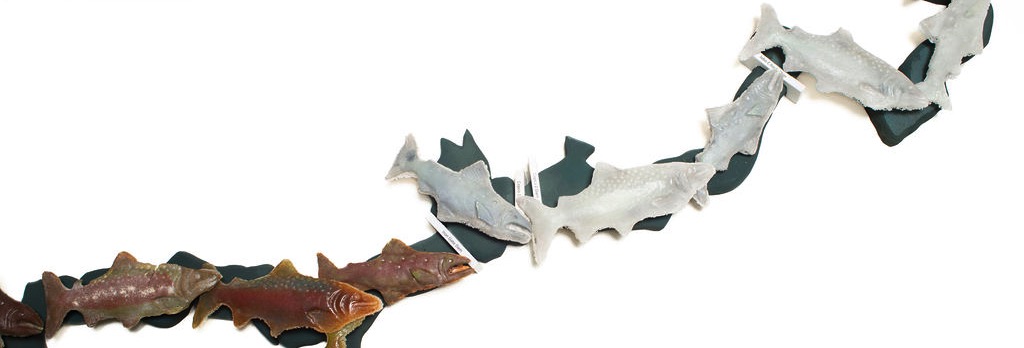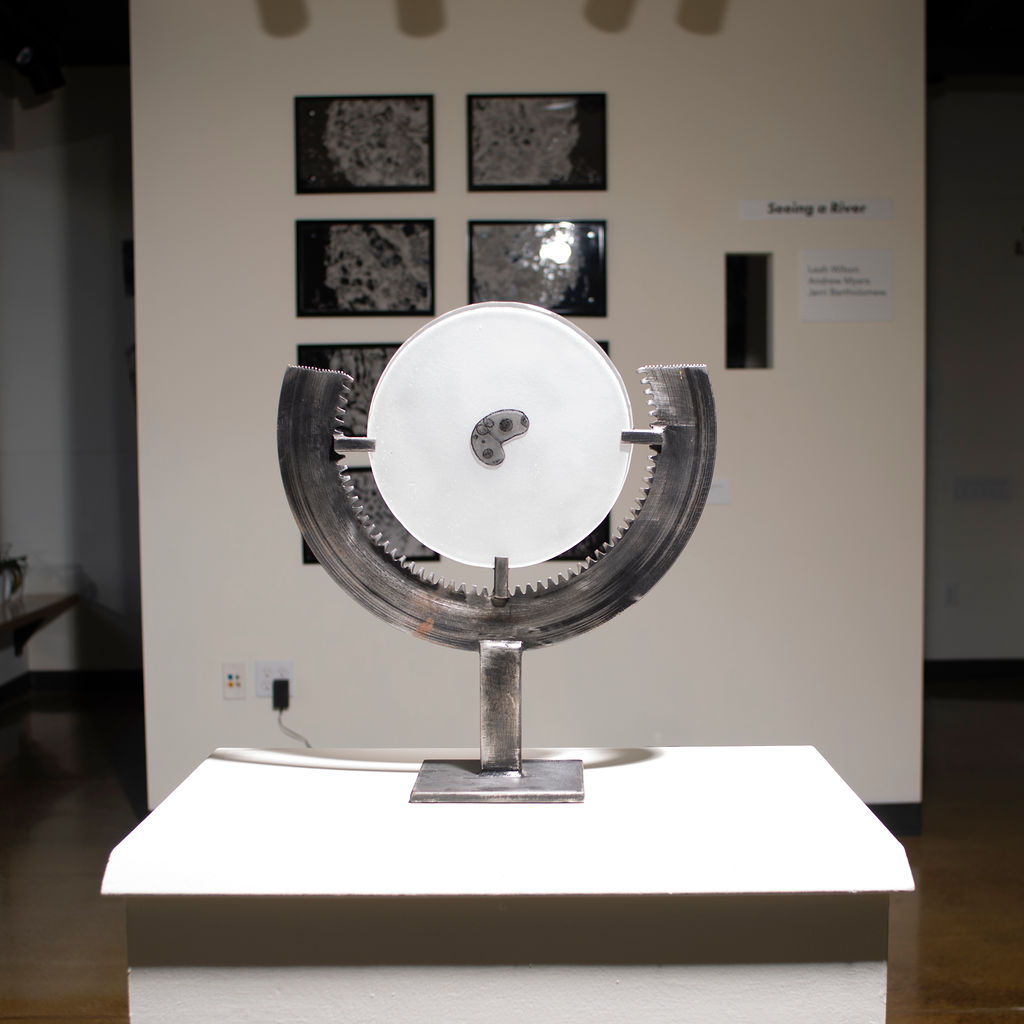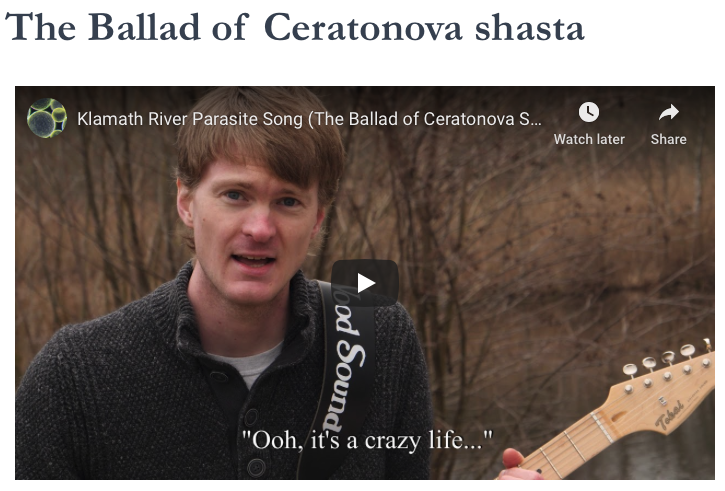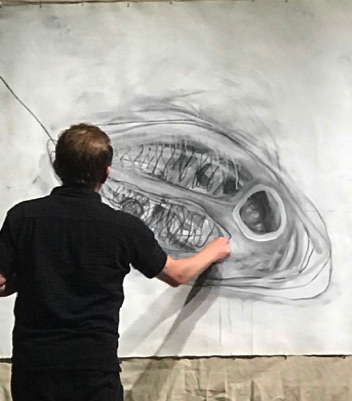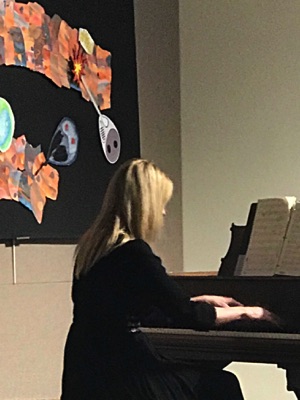Jerri Bartholomew
Projects
These projects allow me to explore the relationship between art and science more deeply through public engagement. They are often a result of long-term collaborations and discussions about how the two disciplines influence each other and how we can integrate them. Art has largely been a tool for communicating science, but I believe there is room for a larger role. Being an artist has helped me, as a scientist; providing a different perspective by examining a topic in more detail using a different approach or through collaborations and discussions with artists. These conversations have evolved into a more formal consortium for discussion and collaboration, about which you can learn more: ART-SCI at OSU.
The Klamath
And the Dams Come Down
Beginning in 2023 the largest dam removal project in world history will take place in the Klamath River. One of the primary goals of breaching the four dams is to reconnect salmon with hundreds of miles of habitat that has been inaccessible for over 60 years.
This piece shows salmon distribution as it is currently, with the extirpated runs in the upper basin represented by ghost salmon. This work will track the process of salmon recovery, and in the future the ghost fish will gradually be replaced by adult Chinook and coho salmon as they re-establish in upper river reaches and tributaries.
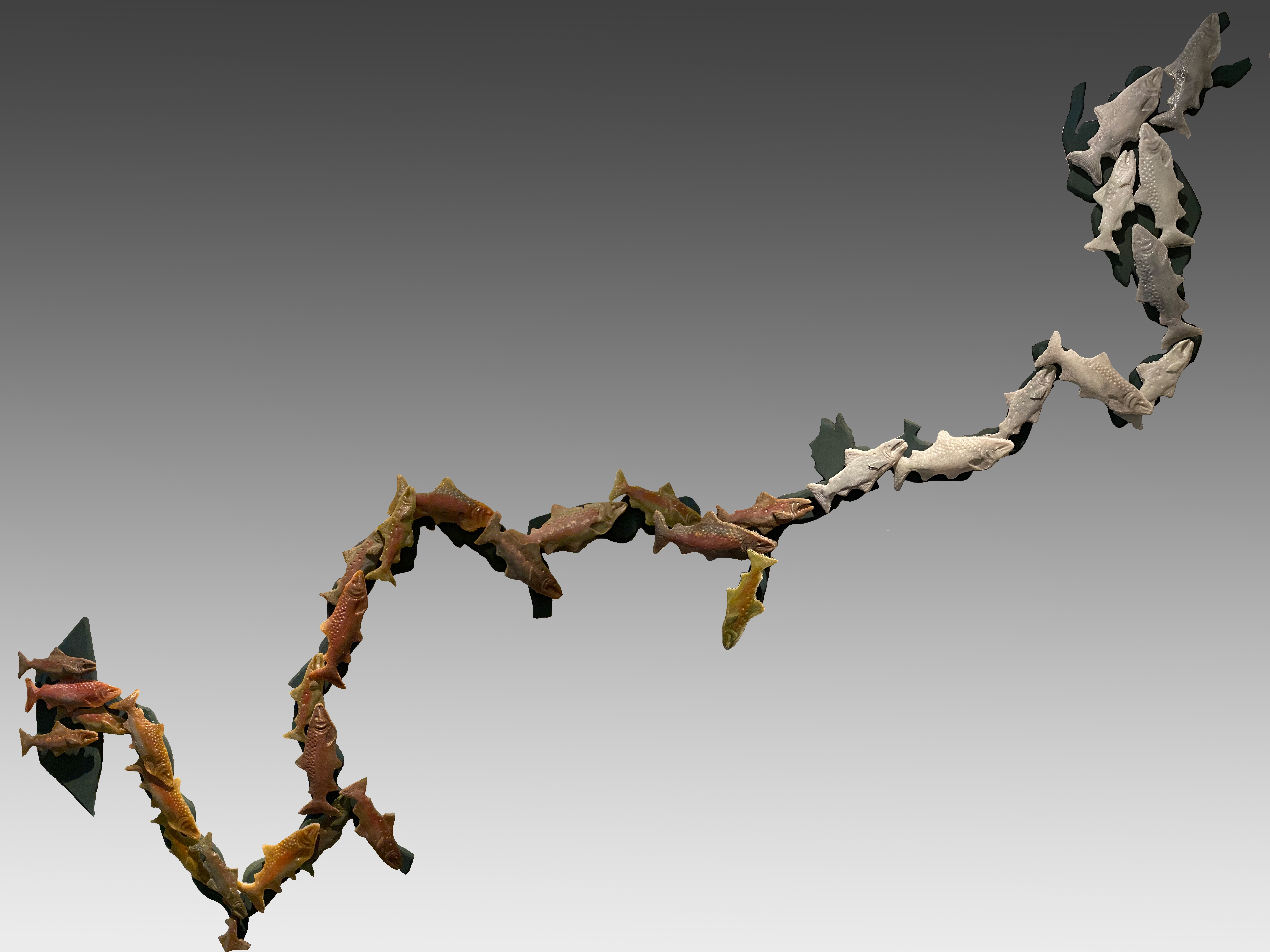
And the Dams Come Down
Pate de verre salmon mounted on a carved river, 6’ tall x 8’ wide, 2023
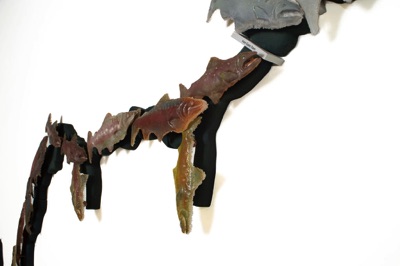
Seeing a River
A river is a complicated ecosystem, an artery that supports aquatic life and the terrestrial life that border it. From their headwaters to their mouths, rivers flow through forests and canyons, farmlands and cities, and are constrained by canyons and dams. These features shape the flow and contour of the river as well as the life in it.
We see the river based on our relationship with it, and my lens is as a salmon disease ecologist. Witnessing how human intervention can alter the natural host-pathogen balance informs how I see a river.
In this exhibition, at the Truckenbrod Gallery, February 2023, two artists (Leah Wilson and Andrew Myers) and I shared our views of a river through our different perspectives.
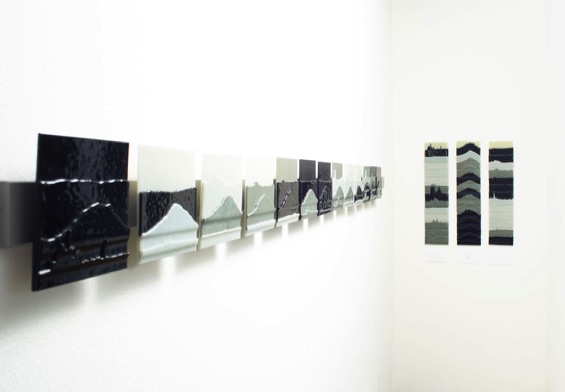
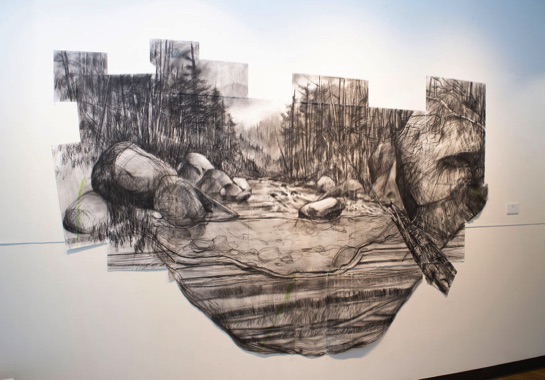
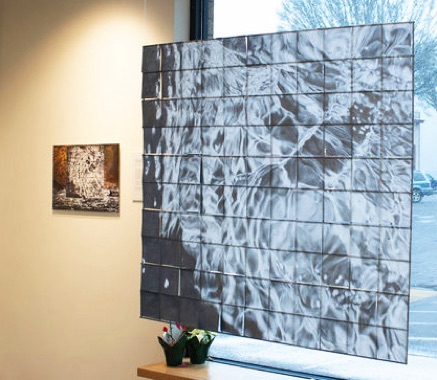
Images from Seeing a River
Clockwise: Ceratonova shasta (Bartholomew) and Stories Told by Water: Bones and Sinew (Wilson); There Will be Good Years (Bartholomew); Whychus Creek (Wilson); Mile Marker 49 (Myers). Photo Credits: Jessica Hume-Pantuso
Willamette River
The Willamette River is an integral part of the culture of our region. From its headwaters to the south to its confluence with the Columbia River to the north, the river flows through forests, farmlands and cities. These features, and the dams that control its waters, have shaped the flow and contour of the river.
This iron and glass sculpture conveys the dynamic nature of the Willamette River and its tributaries. At tributary junctures, cast glass rounds detail the complex channels that occur beneath the river surface, a network carved over many years bya meandering river.
This work was a collaboration with undergraduate Karl Payne, who conceived of the design for the river, and I cast the tributary channels. The Linn Benton Community College welding program carried out the fabrication.
The sculpture is mounted in the courtyard outside of Nash Hall on the Oregon State University campus. The piece is dedicated to Dr. John L. Fryer, former Microbiology professor and chair, and to all the researchers who have studied the river and its fish. The work was funded by the Emile Pernot Distinguished Professorship and a donor. Dedicated May 2019.
Willamette River
Cast glass, metal, 2018
Photo credit: David Paul Bayles
"Evolution of a Superbug"
The science of microbiology tries to measure and understand complex microscopic systems using the scientific method. We know that some bacteria, known generally as “superbugs” are developing resistance to common treatments, and that much of this is due to the excessive use of antibiotics. In this conversation, Oregon artist Bets Cole responded to the research of Dr. Michael Baym, Harvard Medical School, on the evolution of drug resistant bacteria. Composer Dana Reason played a piano composition and discussed how sonifying visual data can perhaps lead to new and unexpected collaborations and discoveries. This discussion evolved as a result of the exhibition “Microbiomes: To See the Unseen” in 2017.
Music as a Conduit for Science Awareness
For over two decades, much of my research has focused on the causes of salmon declines in the Klamath River, which spans the Oregon/California border. These salmon are an historically important fishery, relied upon by native tribes such as the Yurok, Karuk and Hoopa. However, human development of the river through construction of roads and dams, diversion of water for agriculture, and alteration of habitat by mining has altered dynamic river processes and contributed to the decline of these iconic fish.
High abundance of certain fish pathogens is one result of these alterations, and in particular, a disease caused by the myxozoan parasite Ceratonova shasta. Our research has resulted in a better understanding of the factors that contribute to severe disease, to methods for monitoring parasite abundance and predicting their impact on salmon, and to management actions to decrease those effects.
This music video, which tells the story of this parasite in the Klamath River, was produced through a collaboration with Dr. Christien Laber, a scientist and song writer. This is one of several collaborations with musicians, each bringing different approaches and allowing me to look at my research through different perspectives.
"Weapons of Microdestruction"
The title for this project, coined by a graduate student in my lab, comes from the myxozoan parasite structures that allow attachment to the fish host. The structures are analogous to the stinging cells of jellyfish. To understand what is involved in the process of the parasite firing its tubules to attach to a fish, we collaborated with cnidarian biologists, physicists and biochemists.
However, I was also interested in what artists can add to our understanding, and to our ability to engage the public in our research. This public presentation, in May 2019, was a collaboration with musician Dana Reason, artist Andrew Myers, and the student group, Seminarium. Together, we explored what the process of parasite development looks like not only scientifically, but also visually (timelapse of drawing) and musically (archival video of performance).
This collaboration was published in SCIART Magazine.
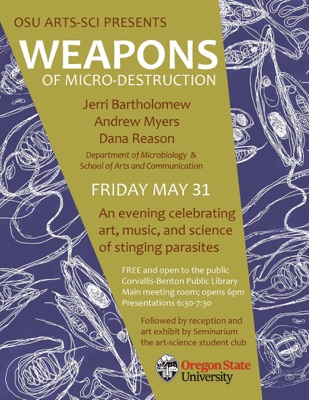
Artist Andrew Myers and composer Dana Reason interpreting parasite weapons of micro destruction
